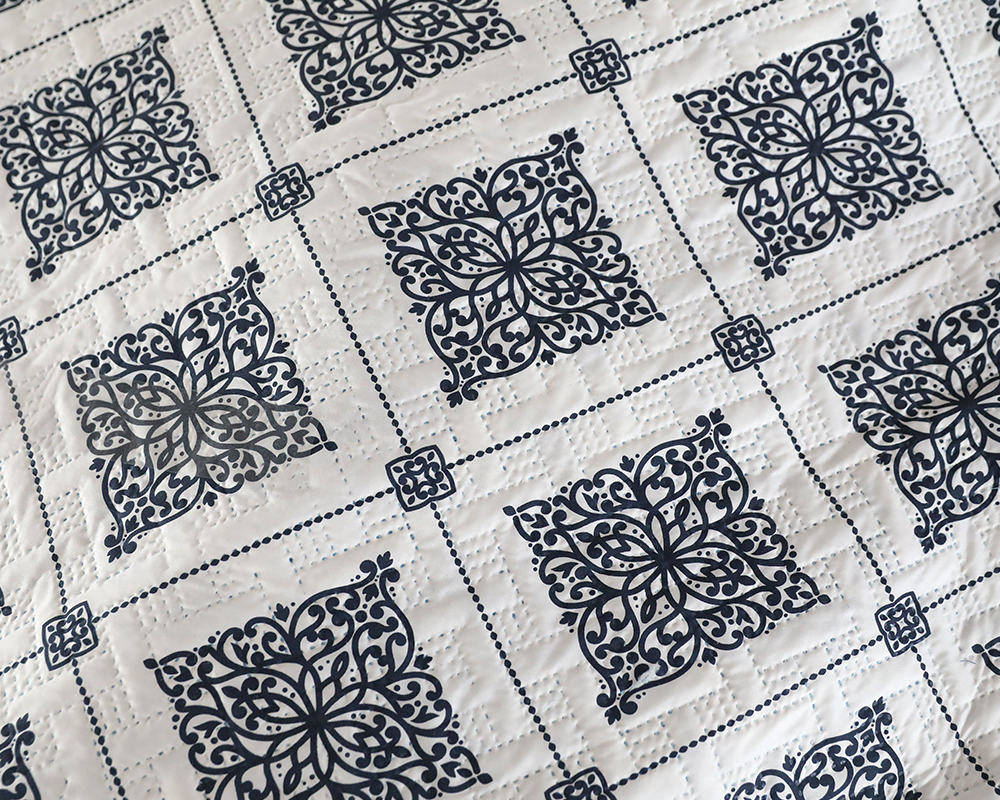Search...
The design flexibility of printed ultrasonic fabric differs significantly from traditional printing methods due to the nature of the technology and its capabilities. Here’s how they compare:
Ultrasonic printing excels in creating raised patterns, textures, and embossments. The technology allows for intricate, three-dimensional designs that are physically molded into the fabric, offering a tactile dimension that traditional printing cannot achieve. This method is particularly useful for creating patterns that enhance the fabric's aesthetic and functional properties, such as increasing friction or adding decorative elements without altering the material’s color.
Ultrasonic printing can also simultaneously cut and bond fabrics, enabling complex design patterns and precise edge finishes that are not possible with ink-based methods.
Traditional methods like screen printing, digital printing, or dye-sublimation focus on applying color to the fabric’s surface. These methods can produce complex, multi-colored patterns, gradients, and photographic images. They offer virtually unlimited color options and are ideal for designs that require detailed visual representation.
Traditional printing typically creates two-dimensional designs on the fabric’s surface. While it allows for highly detailed and colorful imagery, it does not change the fabric’s texture or structure in the way ultrasonic printing can.
Ultrasonic printing works best with synthetic fabrics like polyester and nylon because these materials can easily be manipulated by ultrasonic energy. The method is less effective or not applicable with natural fibers like cotton or wool unless they are blended with synthetics.

Traditional printing methods can be used on a wider variety of fabrics, including both synthetic and natural fibers. This versatility allows designers to work with materials that ultrasonic printing might not be compatible with.
Since ultrasonic printing doesn’t use inks, dyes, or chemicals, it produces no wastewater or harmful emissions. This makes it a more sustainable option, especially for designs that rely on texture and pattern rather than color.
Traditional printing often involves the use of dyes, inks, and solvents, which can have significant environmental impacts due to the chemicals involved and the wastewater produced during the process. However, advancements in digital printing have reduced some of these impacts by minimizing ink waste and eliminating screens.
Because ultrasonic printing bonds the material at a molecular level, the designs are typically more durable, resisting wear and tear better than surface-applied inks. This makes it suitable for high-wear applications like automotive interiors or activewear.The longevity of traditional prints can vary depending on the method used and the fabric. Screen prints, for example, can crack or fade over time, while dye sublimation is more durable but limited to synthetic fabrics.
The process is rapid, with no need for drying time, making it highly efficient for large-scale production of designs that rely on texture and structure rather than color.Production speed in traditional printing can vary widely depending on the method (e.g., screen printing can be slow due to setup and drying times, whereas digital printing is faster). However, for complex, multi-colored designs, traditional methods may be more time-consuming.
Printed ultrasonic fabric offers unique design flexibility that is different from traditional printing methods, particularly in its ability to create textured, three-dimensional patterns and its suitability for use on synthetic fabrics. While traditional methods excel in applying complex, colorful designs on a wide range of materials, ultrasonic printing focuses on texture, durability, and efficiency, making it a valuable tool for specific applications where these qualities are prioritized.

 English
English
 中文简体
中文简体
 Español
Español





.jpg?imageView2/2/format/jp2)






